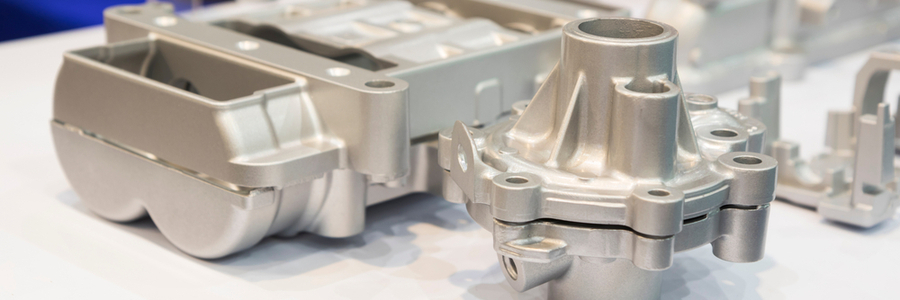
DIE CASTING COOLING SYSTEMS WITHIN THE DIE CASTING PROCESS

Die casting is one of the most reliable techniques used in many metal casting industries today. While this method is highly efficient, it is associated with the generation of significant amounts of heat energy. Maintaining an optimum thermal environment within a die casting plant is of utmost importance if manufacturers hope to produce high-quality finished parts consistently.
What Is Die Casting?
Die casting is a widely employed metalworking technique where molten metal is cast under high pressures. The die casting process steps are relatively straightforward, but allow for a high degree of accuracy and replication.
Benefits of Die Casting
Die casting has various benefits, including the ones outlined below:
- Die-cast metal parts have a high level of consistency and accuracy with regards to a predetermined specification
- There is a reduced need for machining post-casting
- Creation of complex casts with fine intricate internal and external details
- High levels of dimensional tolerance are achievable
- Rapid production cycles will boost overall productivity
- Economical process limits the amount of scrap metal generated
- Die casting permits longer tool life, especially when used in zinc and magnesium casting operations

How Does Die Casting Work?
High-pressure, traditional die-casting has four key steps:
- Mold preparation
- Injection
- Cavity ejection
- Shakeout
Mold Preparation
The initial stage of die casting is mold preparation. This first step allows manufacturers to ready a pre-formed mold for the molten metal it will house. The application of lubricant to the inner walls of the mold helps regulate its temperature and allows easier separation after the cast metal has solidified.
Injection
Once the mold is adequately prepped, molten metal is injected under high pressures and speeds into it. Most die casting operations are conducted within pressure ranges of 1,500 to 25,000 PSI. To satisfactorily retain the liquid metal, the mold must be completely sealed off, retaining filling pressures until it has cooled and solidified.
Cavity Ejection
Cavity ejection follows satisfactory cast cooling/solidification. Most die casting systems possess convenient ejection features that allow operators to access the mold cavity and remove the newly formed part.
Shakeout
The final step of the die casting process is removing excess material accumulated during the mold injection stage. Any scrap excess material retained within the mold cavity is removed and recycled.
Types of Machines Used In Die Casting Processes
The machine types most commonly used in die casting processes are:
- Hot-chamber machines
- Cold-chamber machines
Hot-chamber Machines
Hot-chamber machines are used primarily in casting aluminum and other low melting point alloys that are less corrosive on the die casting equipment. Hot-chamber machines are rapid cycle devices with operation times typically lasting between less than a second to thirty seconds. The injection mechanism submerged in molten metal within a furnace has a nozzle delivering liquid metal at filling pressures between 1500 to 4500 psi.
Cold-chamber Machines
The major difference between a cold-chamber machine and a hot-chamber one is the state of the injection plunger and cylinder. In a cold-chamber machine, the injection mechanism is not submerged; rather molten metal is delivered into it via a pouring hand or ladle. An automatic hydraulic plunger then forces the metal into the sealed die. Cold-chamber machines can be operated at significantly higher pressures (between 3000-15000 psi) than hot-chamber units.
The Importance of a Die Casting Cooling System
Thermal regulation within a die casting system is critical to the success of the entire operation. Different metals have unique temperatures at which they are best forged, and a deviation outside these given thermal ranges will result in defective final products. Further, excessive temperatures within a die casting system will damage less resistant components, leading to equipment failures and costly maintenance downtimes.
To prevent the adverse effects of poorly regulated casting temperatures, a die-cast cooling system is highly recommended. These devices will optimize process efficiency, protect critical equipment, and ensure the production of high-quality parts.
Cold Shot Chillers Can Help Regulate Die Casting Temperatures
At Cold Shot Chillers, we manufacture and install industrial process chillers of the very best quality. Our custom-built cooling solutions are suited to a broad range of production processes, including die casting.
Contact us online today to learn more about the cooling options we offer for die casting.
